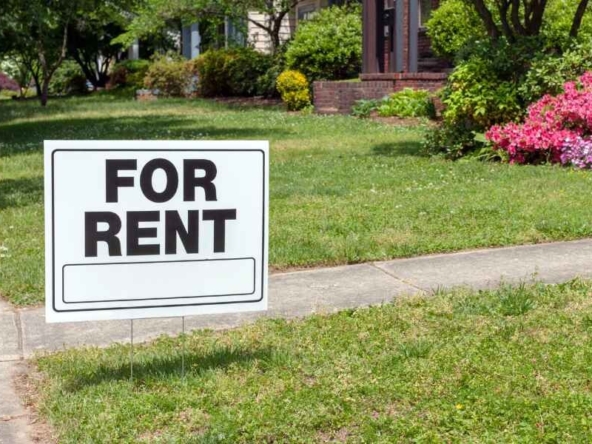You manage a property and want to avoid possible risks. Understanding potential hazards and mitigating any risk that can’t be avoided is critical for success.
Identify Property Management Risks
As a property manager, recognizing and addressing potential risks is crucial in safeguarding your investments while maintaining tenant satisfaction. In addition to the risk mitigation strategies, you should also actively assess the broader spectrum of potential hazards associated with daily operations.
One primary area to evaluate is lease agreements since they set rental terms and house rules that protect both parties from misunderstandings or conflicts. Ensuring applicants undergo thorough background checks can help minimize issues related to safety, financial stability, or undesirable behaviors among tenants. Another focal point involves tracking physical damage on properties, including interior wear-and-tear and exterior vulnerabilities susceptible to weather conditions or human intervention such as vandalism.
Conducting regular inspections allows for proactive measures toward upkeep rather than reactive responses following significant loss incidents. Lastly, but certainly not least important, is the aspect of legal compliance. Always stay informed about relevant laws governing housing discrimination practices (i.e., the Fair Housing Act), to avoid any inadvertent violations leading to lawsuits potentially jeopardizing reputation and profits.
Mitigate Risk in the Dallas Market
In the ever-changing property management landscape, staying updated on local laws and regulations is vital to mitigate risk. Regular inspections can also help identify potential issues before they escalate into expensive repairs or legal battles in the Dallas area.
By conducting thorough walk-throughs of rental properties and ensuring all safety measures are strictly adhered to, you’ll be able to address concerns proactively rather than reactively. Tenant communication remains a critical aspect when it comes to minimizing disputes while protecting your reputation as a landlord or property manager. Keep open lines for dialog through various channels, such as email updates and text messages.
This way, tenants will feel more comfortable reaching out with questions or reporting problems early on instead of letting them fester into headaches down the road. Lastly, investing in professional development opportunities greatly benefits yourself and those working at your organization by improving overall efficiency within daily operations, including areas where risks may commonly arise, such as tenant screening processes. This could lead to unintentionally upholding discriminatory practices if not well-trained enough about Fair Housing Act compliance standards and other relevant rules governing renting residential spaces across greater metropolitan regions, such as the Dallas-Fort Worth area marketplace zones.
Assess Vendor Dependencies and Performance
As a property manager, you must evaluate vendor dependencies and performance to maintain smooth operations while mitigating potential risks. Establishing strong partnerships with reliable vendors for maintenance, landscaping, or security services ensures your properties function optimally.
Begin by conducting thorough background checks on each prospective vendor to verify their reputation and track record of success. Review the contractual terms carefully before hiring any service provider to ensure they adhere strictly to industry best practices and relevant regulations. This will help minimize exposure to legal liabilities arising from inadequate service delivery or non-compliance.
Monitor ongoing vendor performance closely through regular communication channels, such as progress reports and periodic reviews of completed work, to address issues proactively. Implement key performance indicators (KPIs) tailored specifically for each type of partnership within the established framework. This facilitates accurate measurement against benchmarks designed explicitly around risk mitigation strategies suited to both parties’ objectives.
In addition, diversify your pool of suppliers whenever possible so as not to rely solely on one particular company whose sudden failure could significantly disrupt essential functions without warning. This is especially pertinent during times of widespread economic uncertainty due to global crises like pandemics and natural disasters. Navigating these challenges requires maintaining heightened vigilance, proactive anticipation, steps for response plans, contingencies to account for fluctuations in demand, and maximizing resilience in today’s rapidly evolving marketplace.
Develop an Emergency Response Plan
When developing an emergency response plan, consider the various potential risks and hazards that property managers may encounter. These can include natural disasters such as floods, earthquakes, or fires; security issues such as break-ins, vandalism, or intruders; and unforeseen emergencies, including power outages or water leaks. Begin by conducting a comprehensive risk assessment for your specific property to identify any vulnerabilities.
Examine the probability of each identified hazard occurring and its potential impact on occupants’ safety as well as the overall functionality of the building. Once you have systematically analyzed existing threats with relevant stakeholders, such as residents, security personnel, and insurance providers, it’s crucial to establish clear communication procedures during emergencies. Ensure that all residents understand how they will receive information via phone calls, emails, or texts in urgent situations.
Further steps involve training staff members about their roles during different crises while equipping essential team players with the necessary tools (e.g., first aid kits). Frequent drills should be held so everyone remains familiarized with established protocols when it matters most, under pressure amidst the real challenges faced by properties today. Ultimately, proactive planning alongside regular monitoring ensures maximum effectiveness when confronting unexpected events head-on: safeguarding tenant wellbeing while protecting valuable assets within managed spaces across diverse regions nationwide.
Evaluate Facilities Maintenance Programs
To enhance your facilities maintenance program, it’s crucial to continually assess and update the plan according to evolving requirements. Begin by establishing regular review periods, during which you can evaluate all aspects of the current maintenance strategy. Keep track of relevant trends in facility management technology that may contribute valuable improvements to your approach.
Implementing a preventive maintenance schedule is another key step toward optimizing performance while reducing potential risks. Property managers can prolong asset lifespans and minimize downtime and repair costs by addressing equipment issues before they become critical failures. In addition to prevention techniques, consider developing an effective contingency plan for unexpected equipment failure.
This includes identifying alternative means for maintaining operations until primary systems are restored or replaced as needed. Don’t forget about staff training. Ensuring employees possess adequate expertise on the proper use and upkeep of building components improves safety and ensures smooth functioning within their workplace environment.
Finally, actively seek feedback from occupants regarding any concerns with existing infrastructure elements. This information will help identify areas where enhancements must be made most urgently. In conclusion: implementing thorough evaluation processes and proactive risk-mitigation strategies empowers property managers to manage their facilities’ overall well-being today, securing long-term success into tomorrow!
Property management is a business that carries various risks, and managing them carefully is important. Understanding what sort of risks property managers may face, such as tenant issues, financial loss, or injury on premises, is essential when mitigating risk. Having proper policies in place, such as detailed contracts and insurance, can manage lease agreements effectively, reducing the potential impacts of unexpected events.





